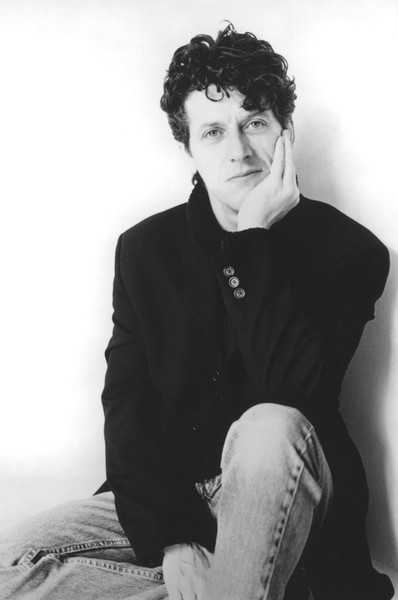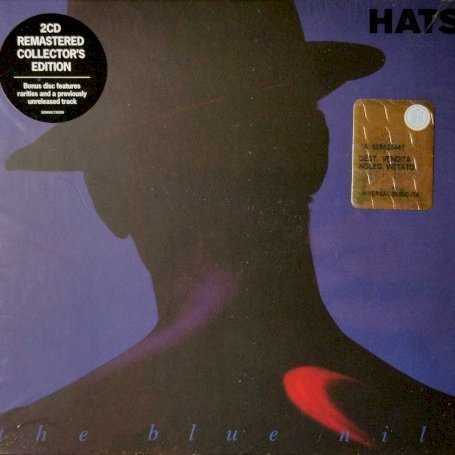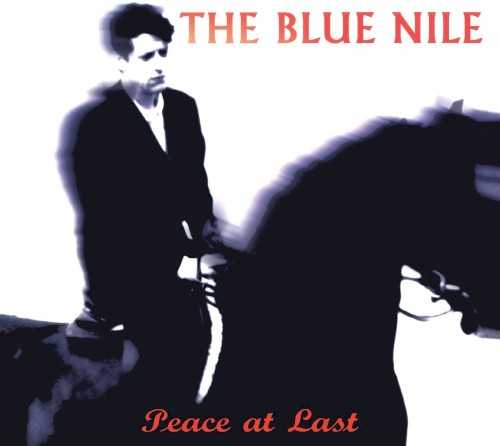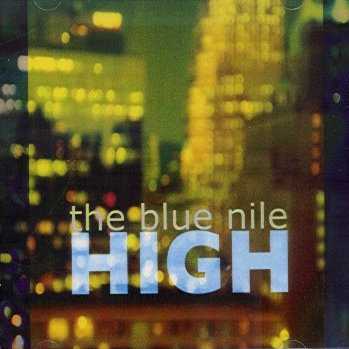The Blue Nile | ||
| Allmusic Biography : The Scottish folk-ambient band the Blue Nile has enjoyed a mystique contrived by its inaccessibility and the infrequency of its recordings, but it has also made a series of critically acclaimed discs. The group was formed by three Glasgow natives who had graduated from university there: singer/songwriter/guitarist Paul Buchanan, bassist Robert Bell, and keyboardist Paul Joseph Moore. (Engineer Callum Malcolm and drummer Nigel Thomas have worked with the trio consistently, to the point of being considered secondary bandmembers.) (The Blue Nile is the title of Alan Mooreheads 1962 sequel to The White Nile, the two books making up a history of the Nile River.) They recorded their own single, "I Love This Life," which was distributed by Robert Stigwoods RSO Records just before the company closed its doors. They were then signed by Linn Products, which released their debut album, A Walk Across the Rooftops, in 1984. (A&M; handled it in the U.S.) Since the company was small and the band did not tour, the album took some time to find its audience, though it briefly reached the U.K. charts and led to high expectations for a second album. This came in 1989 with Hats, which reached the British Top 20, throwing off three chart singles, "The Downtown Lights," "Headlights on the Parade," and "Saturday Night." The album also made the lower reaches of the American charts as the Blue Nile embarked on its first tour, a 30-date journey taking place in the British Isles and the U.S. In the ensuing years, the band members switched record labels, signing to Warner Bros., and contributed to recordings by Robbie Robertson and Julian Lennon. They finally emerged with their third album, Peace at Last, in June 1996. Another critically acclaimed release, it placed in the U.K. Top 20, but failed to chart in the U.S. | ||
 | Album: 1 of 4 Title: A Walk Across the Rooftops Released: 1984-05-13 Tracks: 7 Duration: 38:14 Scroll: Up Down Top Bottom 25% 50% 75% Spotify Allmusic AlbumCover | 1 A Walk Across the Rooftops (04:59) 2 Tinseltown in the Rain (05:57) 3 From Rags to Riches (06:06) 4 Stay (04:57) 5 Easter Parade (04:34) 6 Heatwave (06:28) 7 Automobile Noise (05:09) |
| A Walk Across the Rooftops : Allmusic album Review : The Blue Niles debut album has a rather fascinating genesis. Scotlands Linn Electronics wanted a demo track to demonstrate the fidelity and versatility of their new recording console and tapped a struggling local trio, the Blue Nile, to provide it. Their effort was a deliberately disjunctive song called "A Walk Across the Rooftops." To demonstrate the recording equipments dynamic range and clarity, the song was arranged most peculiarly, with vocals, guitar, bass, keyboards, drums, and full string and horn sections all appearing, but never at the same time. Linn liked the song so much that they formed a record label and bankrolled the recording of this full album. The seven lengthy tracks on A Walk Across the Rooftops all follow the model of the opener, with Paul Buchanans rich voice at the center of near-symphonic arrangements that manage to sound lush and incredibly austere at the same time. The tempos are deadly slow, with the most upbeat track, "Tinseltown in the Rain," barely rising above a graceful saunter, and the inventive arrangements make extensive use of empty space. This was a popular album for demonstrating the lack of hiss and background noise in the then-new compact disc medium, but A Walk Across the Rooftops works even better as a piece of music than as a stereo demonstration record. | ||
 | Album: 2 of 4 Title: Hats Released: 1989-10-09 Tracks: 7 Duration: 38:45 Scroll: Up Down Top Bottom 25% 50% 75% Spotify Allmusic AlbumCover | 1 Over the Hillside (05:05) 2 The Downtown Lights (06:29) 3 Lets Go Out Tonight (05:16) 4 Headlights on the Parade (06:16) 5 From a Late Night Train (04:01) 6 Seven A.M. (05:09) 7 Saturday Night (06:27) |
| Hats : Allmusic album Review : Five long years in the making, the Blue Niles stellar Hats was well worth the wait; sweeping and majestic, its a triumph of personal vision over the cold, remote calculations of technology. While created almost solely without benefit of live instruments, it is nevertheless an immensely warm and human album; Paul Buchanans plaintive vocals and poignant songs are uncommonly moving, and his deployment of lush synth washes and electronic percussion is never gratuitous, each song instead crafted with painterly precision. Impressionistic and shimmering, tracks like "The Downtown Lights" and "From a Late Night Train" are perfectly evocative of their titles: Rich in romantic atmosphere and detail, they conjure a nocturnal fantasy world lit by neon and shrouded in fog, leaving Hats an intensely cinematic experience as well as a masterpiece of musical obsession. | ||
 | Album: 3 of 4 Title: Peace at Last Released: 1996-06-11 Tracks: 10 Duration: 44:53 Scroll: Up Down Top Bottom 25% 50% 75% Spotify Allmusic Wikipedia AlbumCover | 1 Happiness (04:40) 2 Tomorrow Morning (04:15) 3 Sentimental Man (05:05) 4 Love Came Down (03:35) 5 Body and Soul (05:16) 6 Holy Love (02:42) 7 Family Life (05:21) 8 War Is Love (03:33) 9 God Bless You Kid (04:56) 10 Soon (05:27) |
| Peace at Last : Allmusic album Review : The members of the Blue Nile seem to have taken seriously all those articles and reviews about what audiophiles and technicians they are, and this time around theyve spent a half-dozen years concocting an album that sounds like they made at least some of it in their living rooms rather than their space-age studio. They achieve the appearance of simplicity and humanity by foregrounding either an acoustic guitar or piano on most tracks, by restraining other instrumentation, by making their synthesizers sound like strings most of the time, and by using real strings on occasion. All of which makes for appropriate settings for Paul Buchanans songs of domestic contentment. "Happiness," "Sentimental Man," "Holy Love": the titles tell the story, though they dont reveal the underlying fear that it will all go bust. ("Now that Ive found peace at last," Buchanan sings to open up the album, "Tell me, Jesus, will it last?") Nor do they explain why a guy who keeps insisting that hes happy sounds so mournful. Buchanan belongs to the Bono/Peter Gabriel school of throaty emotiveness, in which sudden, arbitrary ascensions toward the falsetto signal fits of otherwise unacknowledged passion (or maybe just a sneeze coming on). In Buchanan, the singing style and the loose structure of the songs make his protestations of tranquility unconvincing. That may be what he intends, especially since they lend an implied depth to what is the Blue Niles lightest effort yet. | ||
 | Album: 4 of 4 Title: High Released: 2004 Tracks: 9 Duration: 40:52 Scroll: Up Down Top Bottom 25% 50% 75% Spotify Allmusic AlbumCover | 1 The Days of Our Lives (03:32) 2 I Would Never (04:26) 3 Broken Loves (05:20) 4 Because of Toledo (03:53) 5 She Saw the World (03:36) 6 High (03:46) 7 Soul Boy (04:39) 8 Everybody Else (03:50) 9 Stay Close (07:46) |
| High : Allmusic album Review : If youve read anything else about the Blue Nile, you already know it takes them eight to ten years between albums, theyre elegant sad sacks, and theyre critically adored for the most part. Their last album, 1996s Peace at Last, was their first stumble, with main man Paul Buchanan yammering wistfully about family and domestication instead of giving listeners the skeletal poems and studio magic of their first two albums. If you werent staring at your newborn, Peace at Last could grow tiresome, but the Blue Nile have returned with a more balanced album and Buchanan is broken-hearted again, thank the stars. Hes been struggling with fatigue and illness and as selfish and inconsiderate as it sounds, its brought the spark back to his writing. Mood over narrative has always worked to the Blue Niles benefit and thats what the excellent "Broken Loves" is all about, giving the listener a better chance to relate than Peace at Lasts postcard from home. "I Would Never" is the sweet single, but album tracks like "Because of Toledo" and "She Saw the World" are where the album gets meaty and intricately structured, recalling the glory days. Getting more obscure and atmospheric toward the end, High follows the arc of their classic, Walk Across the Rooftops, and given the time to sink in, the album fits well in their canon. The closing "Stay Close" is one of those "raw emotion over urbanite aesthetic" tracks that fans crave. It makes the eyes well up, and like the better part of High, justifies the next eight- to ten-year wait. | ||